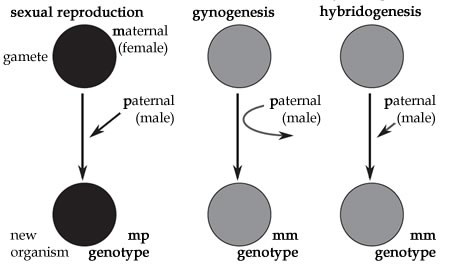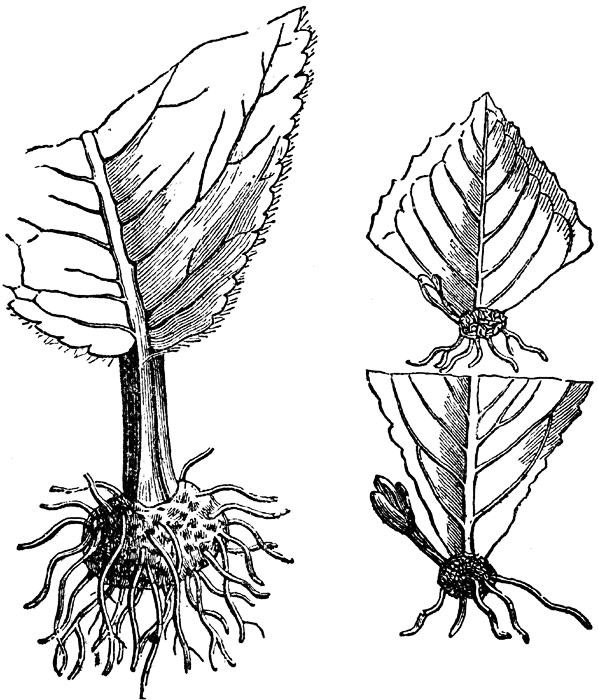In fish and frogs, there are two major versions of asexual reproduction.
Surprisingly enough, like sexual reproduction both are dependent upon a male
In gynogenesis a male sperm activates a diploid egg, but its genome (DNA) is discarded.
In hybridogenesis the sperm also activates the egg, but its DNA is not always lost, it can be incorporated into the genome.
 adapted from Rogers & Vamosi. 2010. Mol. Eco.
19:5086.
adapted from Rogers & Vamosi. 2010. Mol. Eco.
19:5086.
